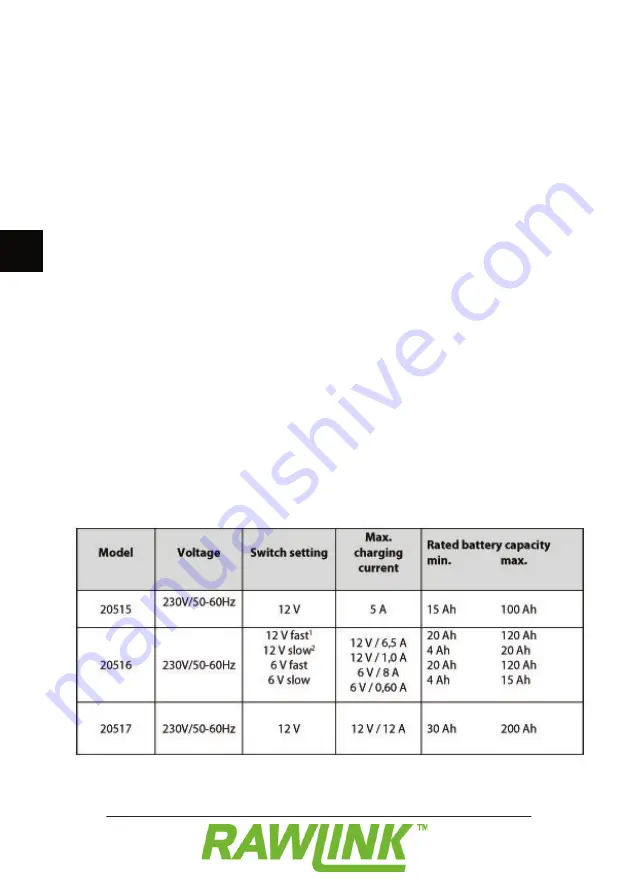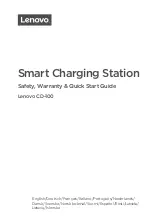
28
GB
Use
Preparations before use
Read the instructions from the battery
manufacturer concerning charging the
battery and follow them.
Note! If you intend to charge a so-called
“wet” lead acid battery, you fi rst need to
check the electrolyte level and top up the
distilled water according to the battery
instructions, if the level is too low.
1. Check the voltage and capacity of the
battery to be charged. If necessary,
check the user instructions for the
battery.
2. Set your battery charger to the correct
voltage and charging current. See the
table below.
3. Connect the battery charger’s red
terminal (+) to the battery’s positive
terminal (+) and then connect the black
terminal (-) to the battery’s negative
terminal (-). Make sure the terminals
are correctly attached to ensure a good
connection.
4. Plug the battery charger’s power
cord into a mains socket. The battery
charger starts to charge the battery. The
charging current is shown in amps on
the amperemeter.
5. Check the amperemeter occasionally.
Once the battery is fully charged, the
amperemeter will display a value close
to zero. The battery charger delivers
a small charging current to keep the
battery fully charged.
6. Unplug the power cord and remove the
black cable and then the red cable from
the battery terminals.
Cleaning and maintenance
The battery charger should be wiped down
with a soft damp cloth, dipped in a mild
soapy solution and wrung out, if possible.
Check the condition of the terminals before
and after use. Remove any corrosion that
may impair the ability of the terminals to
conduct current.
The battery charger should be stored in
a dry place out of reach of unauthorised
persons, including children.
Roll the cables loosely together for storage,
and make sure they do not get squashed
during storage.
1 Fast = car symbol; 2 Slow = bike symbol
















































